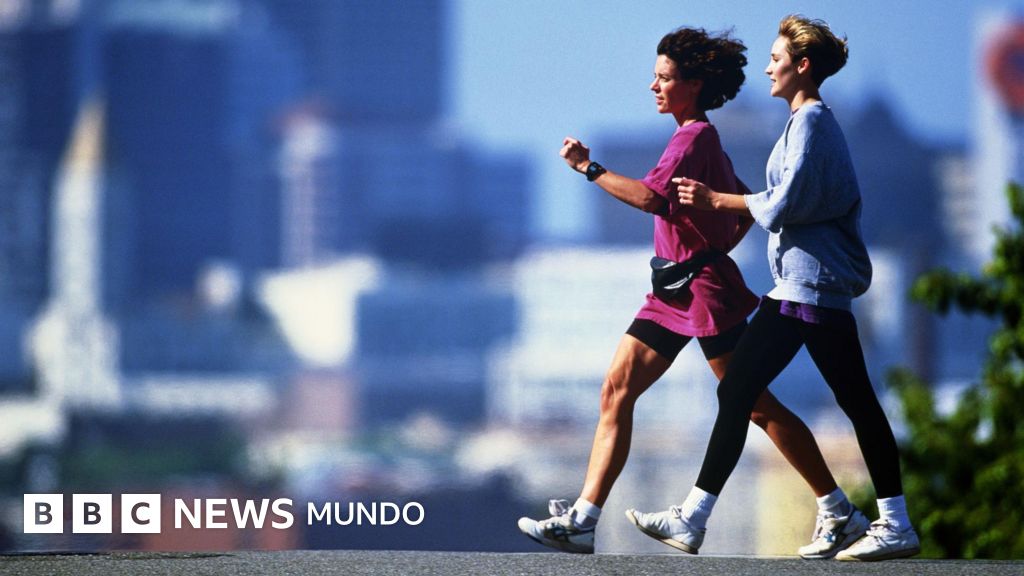

Image source, Getty Images
-
- Author, Sean Pymer
- Author's title, The Conversation*
A trend of fitness Known as Japanese walk (or walk) is monopolizing attention on the Internet, since it promises important health benefits with minimal equipment and time.
The Japanese march, based on rapid and slow march intervals, was developed by Professor Hiroshi Nose and the associated professor Shizue Masuki at Shinshu University in Matsumoto, in Japan.
It consists of alternating three minutes of march to greater intensity with three at lower intensity, for at least 30 minutes, four times a week.
The greatest intensity walk must be done with “some power.” At this level, it is still possible to speak, but maintaining a complete conversation would be more difficult.
The lowest intensity march must be done at a “light” level. At this level, speaking should be comfortable, although a little more laborious than an effortless conversation.
The Japanese walk has been compared to high intensity intervals or HIIT intervals (for its acronym in English) and has been called “high intensity march”, although it is less exhausting than the true hiit and is done at lower intensities.
It is also easy to perform and only requires a stopwatch and walking space. It needs little planning and requires less time than other types of walk, such as reaching 10,000 steps per day. This makes it appropriate for most people.
What shows the evidence?
Japanese walk offers important health benefits. A study conducted in 2007 in Japan compared this method with the continuous march of less intensity, with the aim of reaching 8,000 daily steps.
The participants who followed the Japanese march method experienced notable reductions in body weight. Blood pressure was also reduced, rather than those that followed the routine of continuously walking to less intensity.

Image source, Getty Images
This study also measured the strength of the legs and physical form. Both improved to a greater extent that the Japanese march program followed, compared to those who completed the continuous march of moderate intensity.
A longer -term study also discovered that Japanese march protects against strength and physical form reductions that occur with aging.
These health improvements also indicate that Japanese march can help people live longer, although this has not yet been directly studied.
There are some things to consider this new fashion of walking. In the 2007 study, about 22% of people did not complete the Japanese march program. In the case of the lower intensity program, with an objective of 8,000 steps per day, around 17% did not complete it.
This means that Japanese march may not be adequate for everyone, and may not be easier or more attractive than simple steps -based objectives.
It has also been shown that taking a certain number of steps per day helps to live longer. For those over 60, the objective should be 6,000 to 8,000 steps per day, and 8,000 to 10,000 for children under 60 years.
It does not seem that there are similar evidence for the Japanese march … yet.
Frequency and intensity
So is this fashion of walking the definitive solution? Or does it matter less what exercise is done and more how often and with what intensity? The answer is likely to be the second.

Image source, Getty Images
The research tells us that the people who regularly perform more sessions of moderate to intense physical activity live longer, regardless of the duration of each session.
This means that we must focus on performing a regular physical to intense physical activity and turning it into regular. If this activity turns out to be walking to the Japanese, then it is an option that is worth it.
*Sean Pymer is a clinical physiologist of the exercise and academic, Hull University, the United Kingdom

Subscribe here To our new newsletter to receive every Friday a selection of our best content of the week.
And remember that you can receive notifications in our app. Download the latest version and act.






